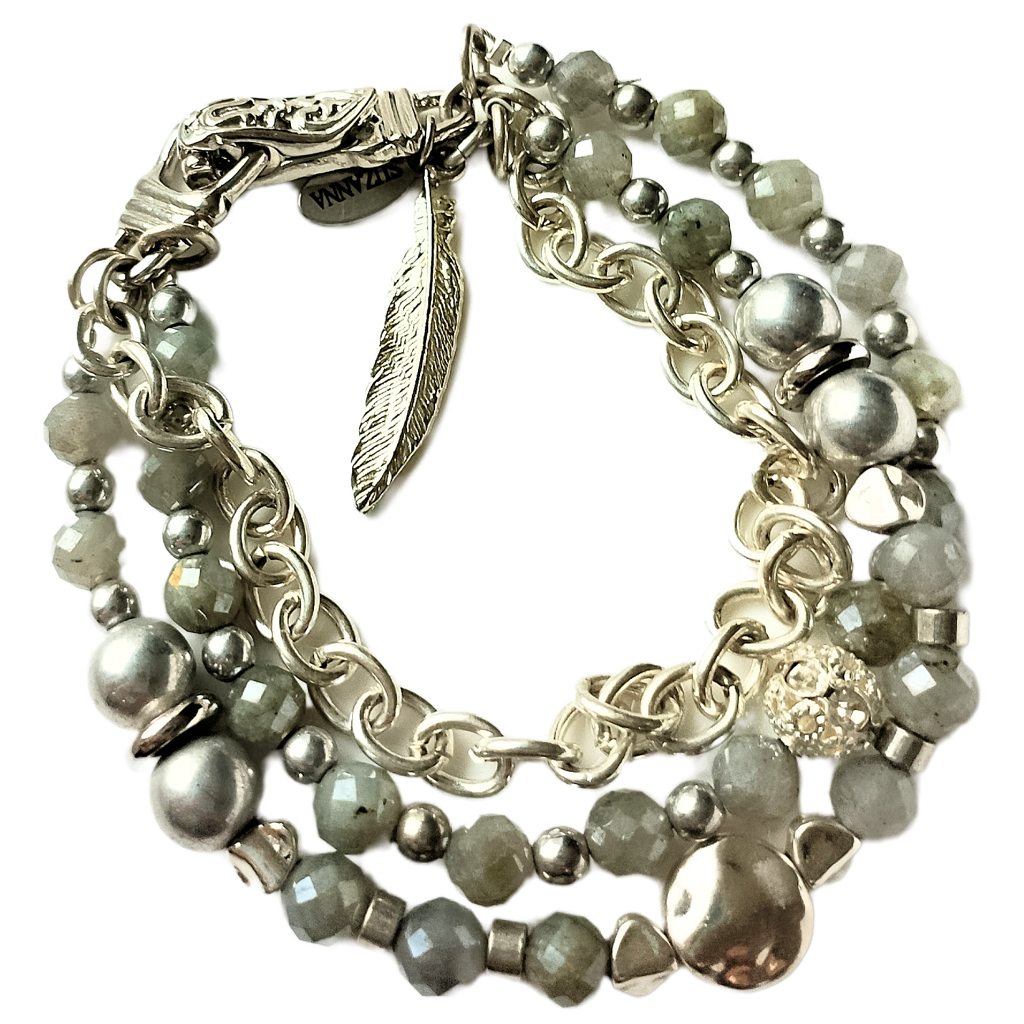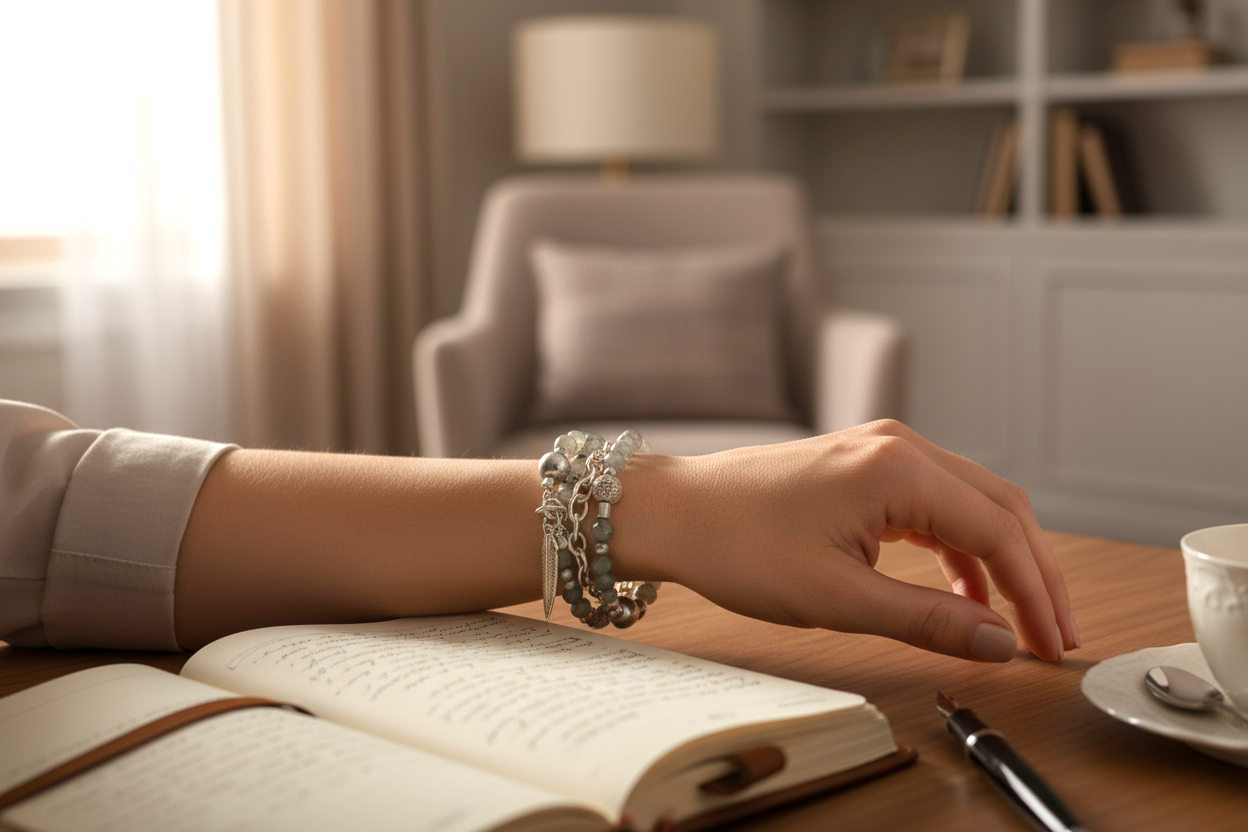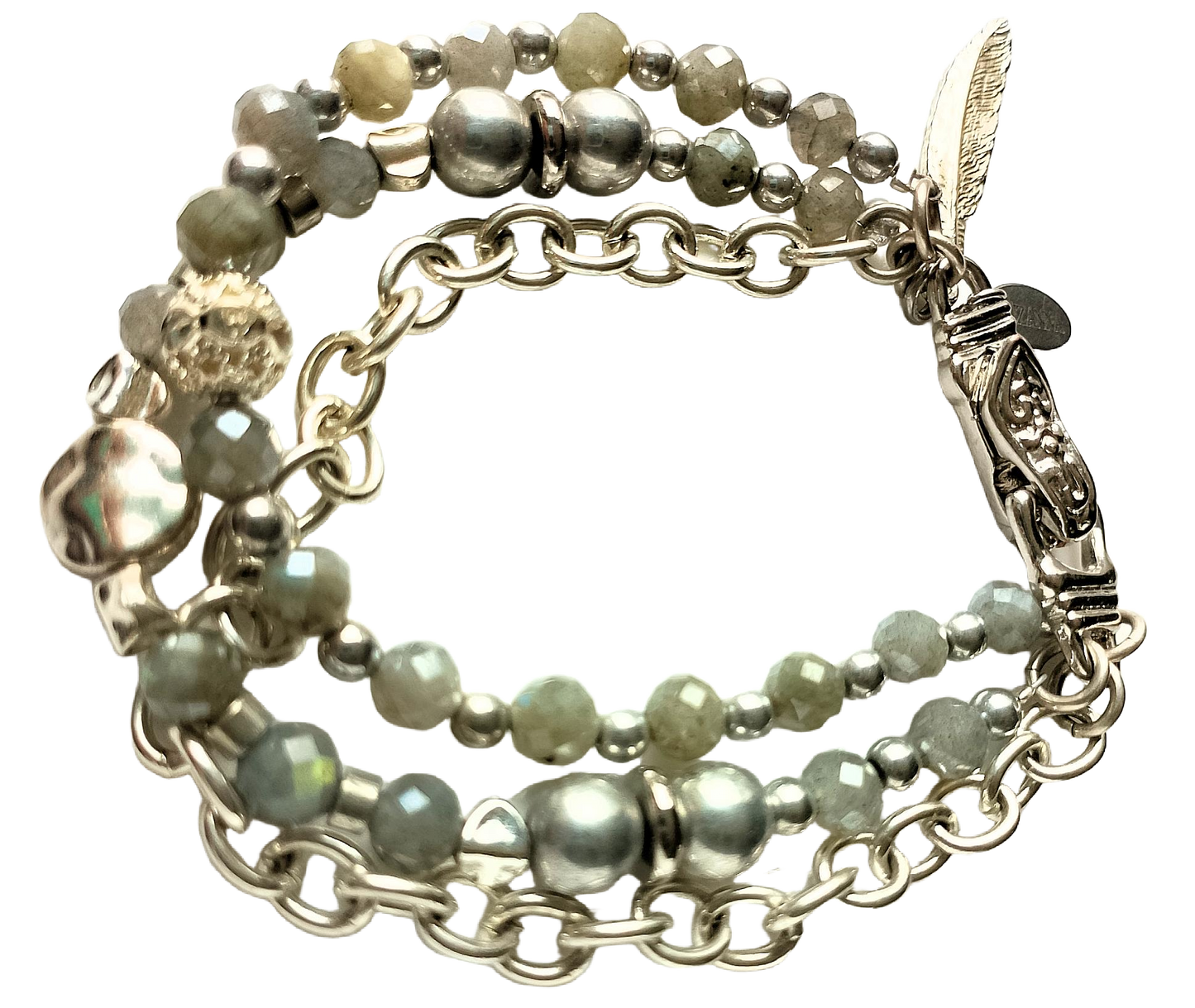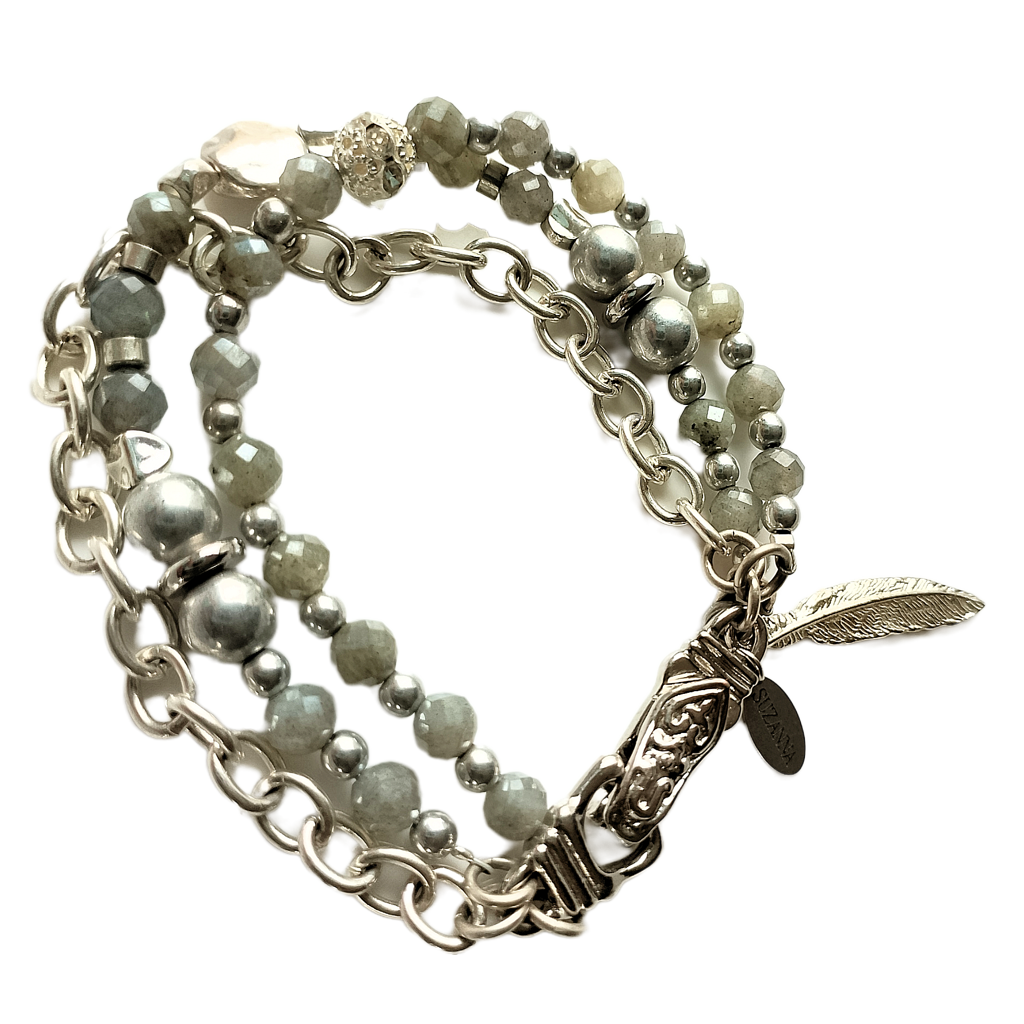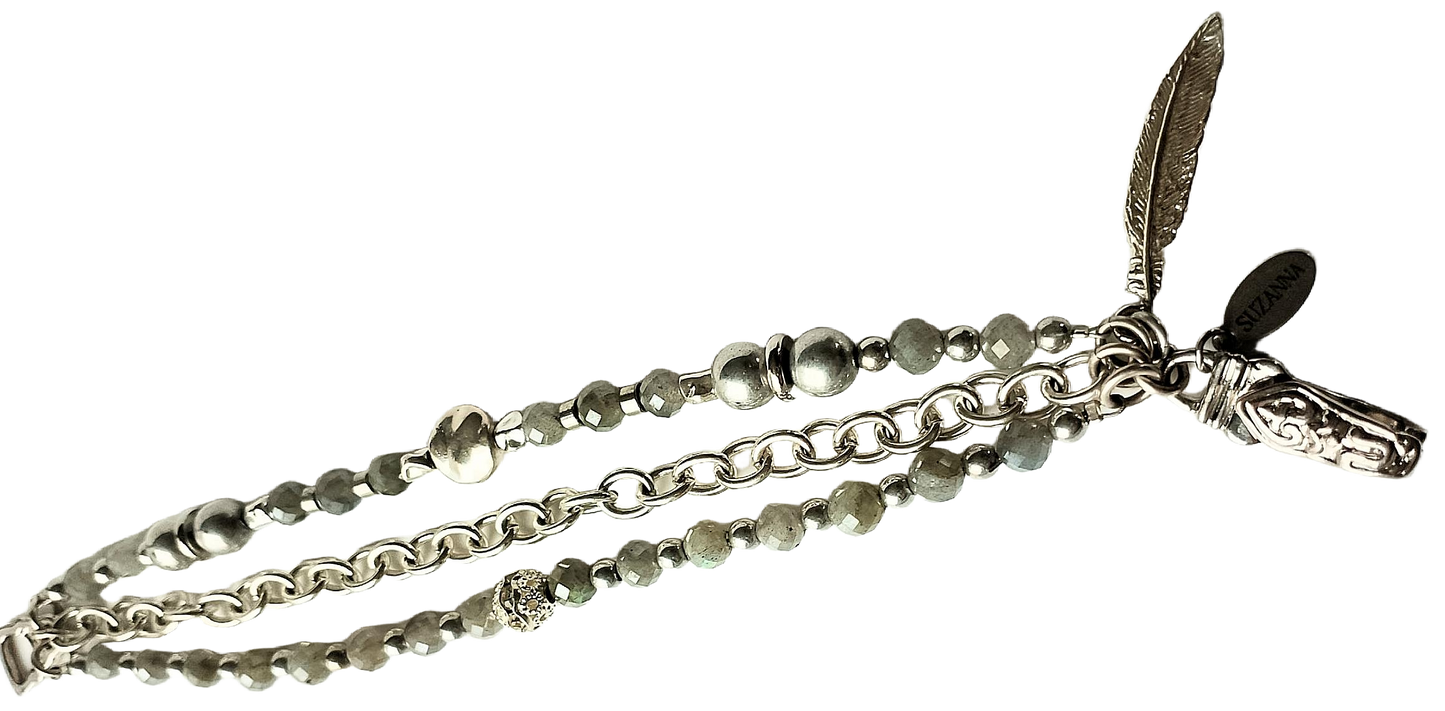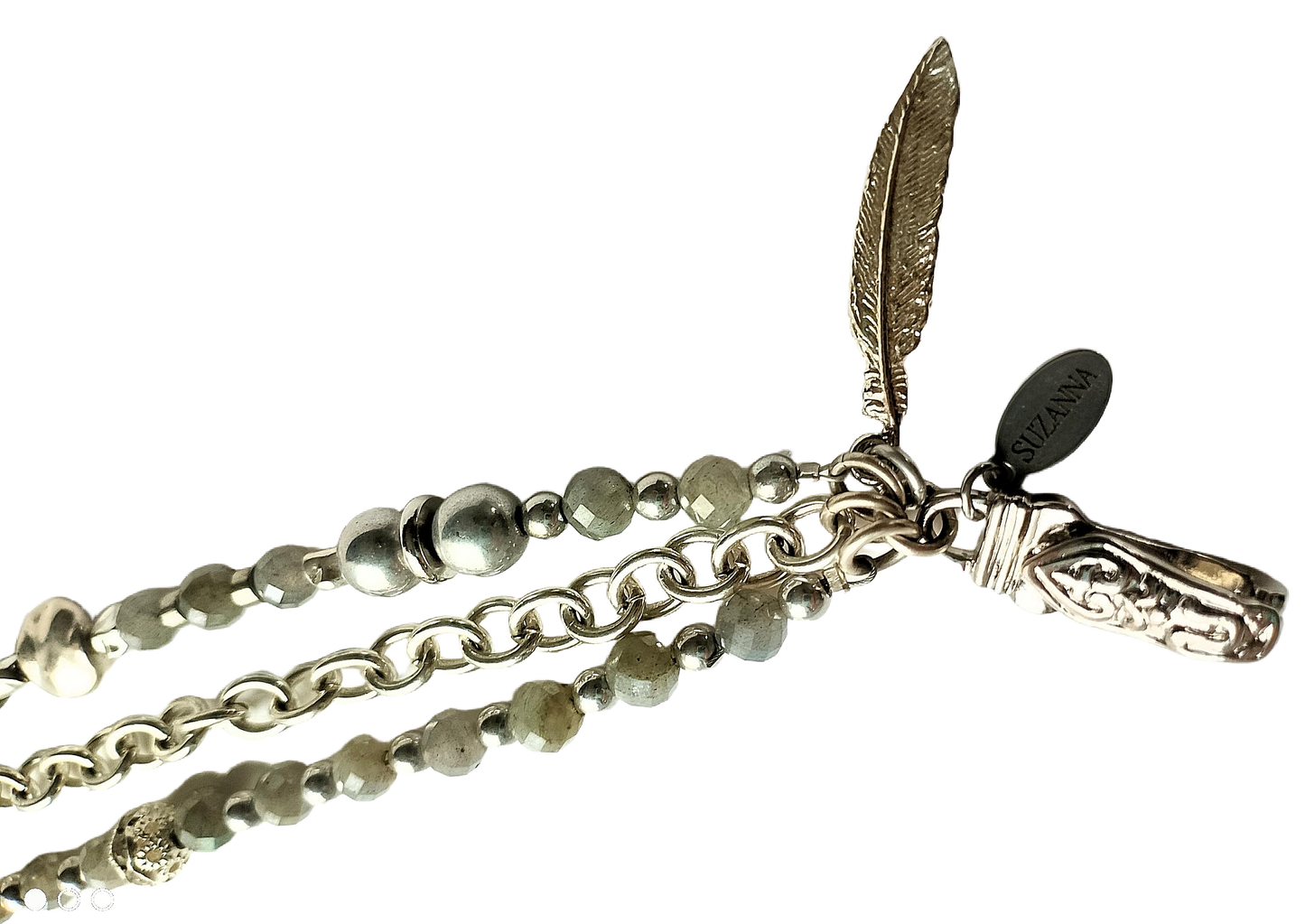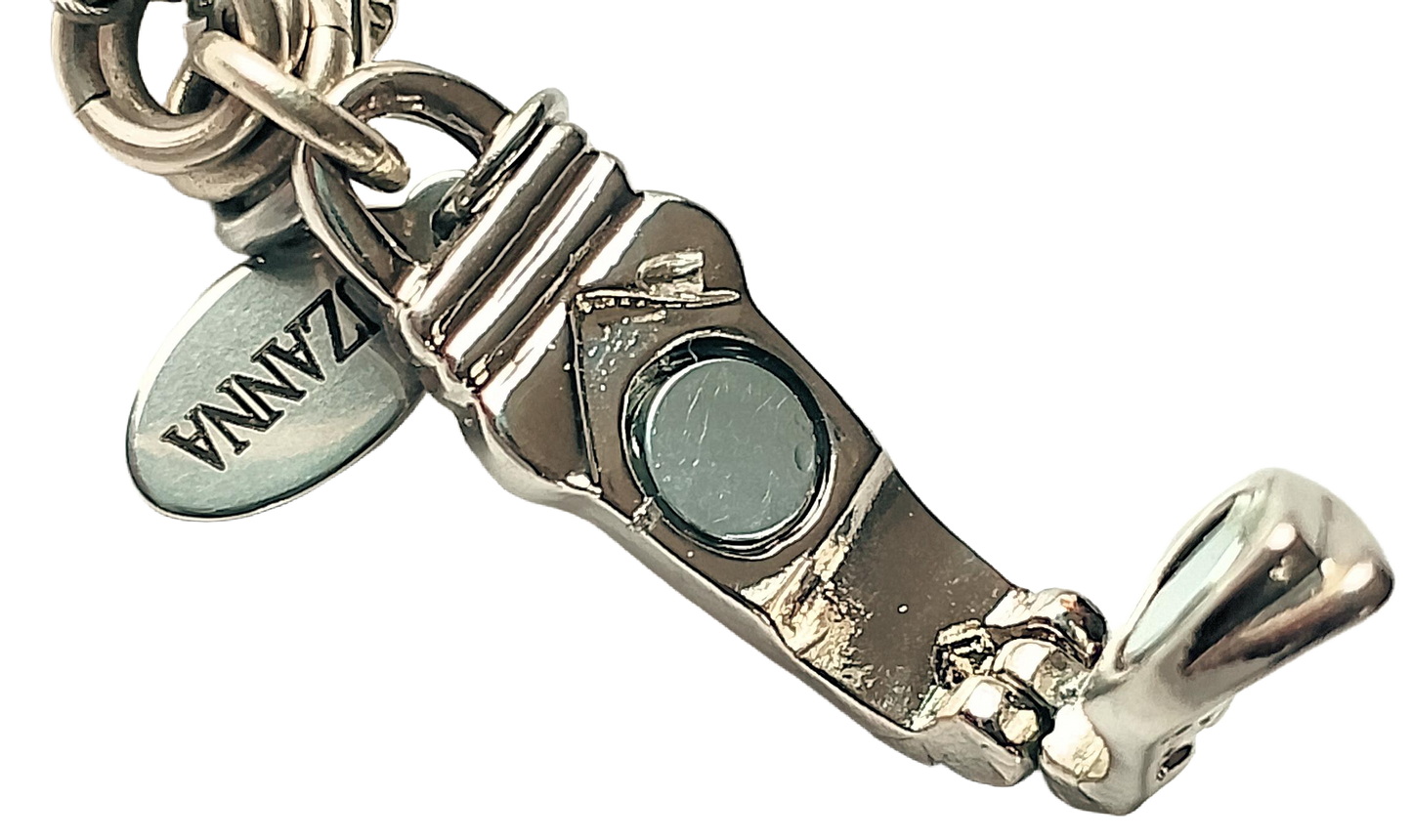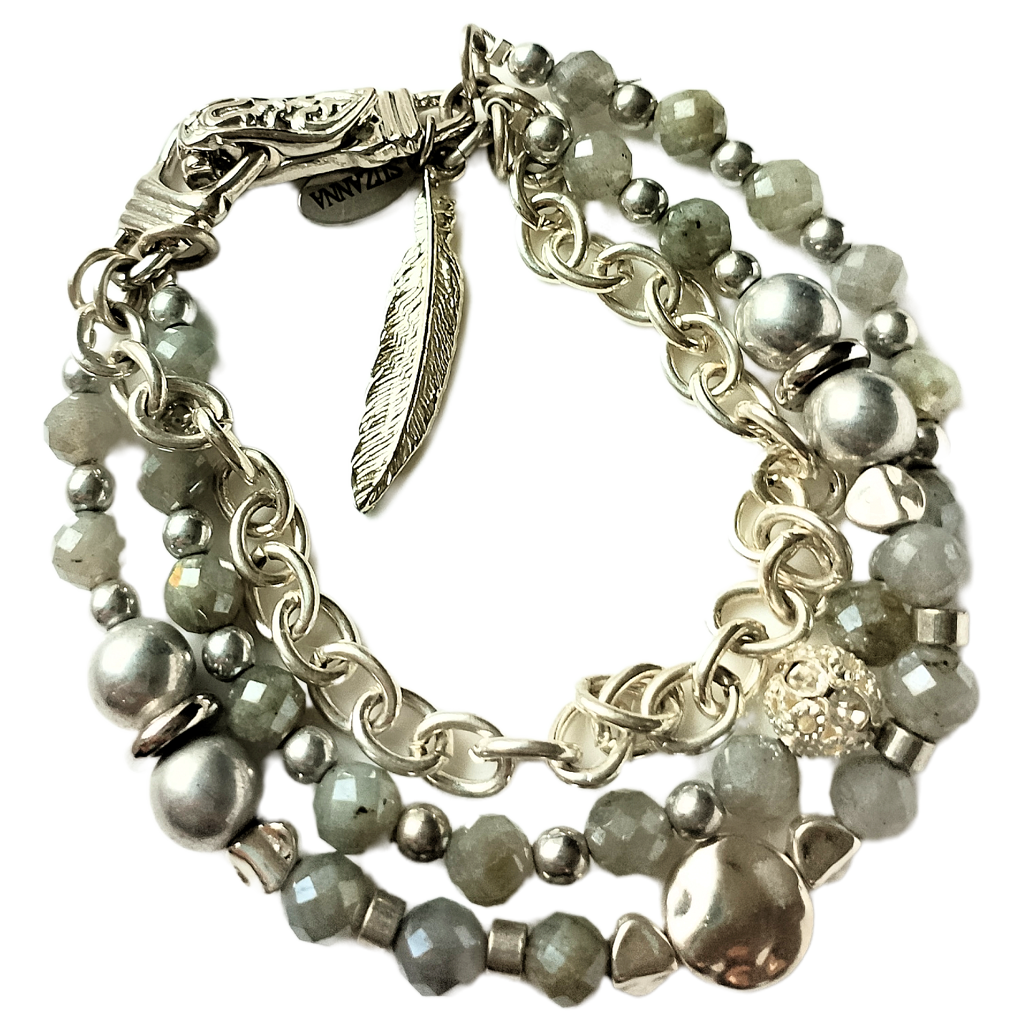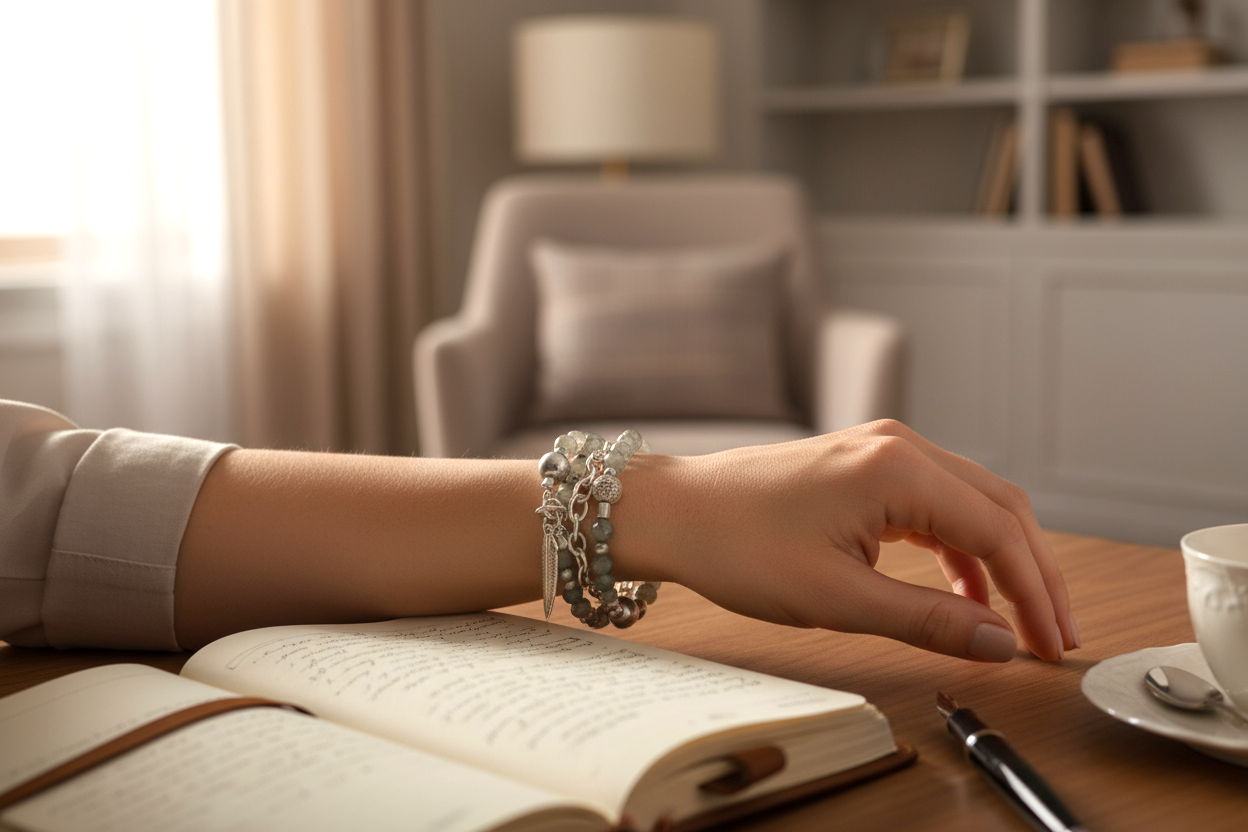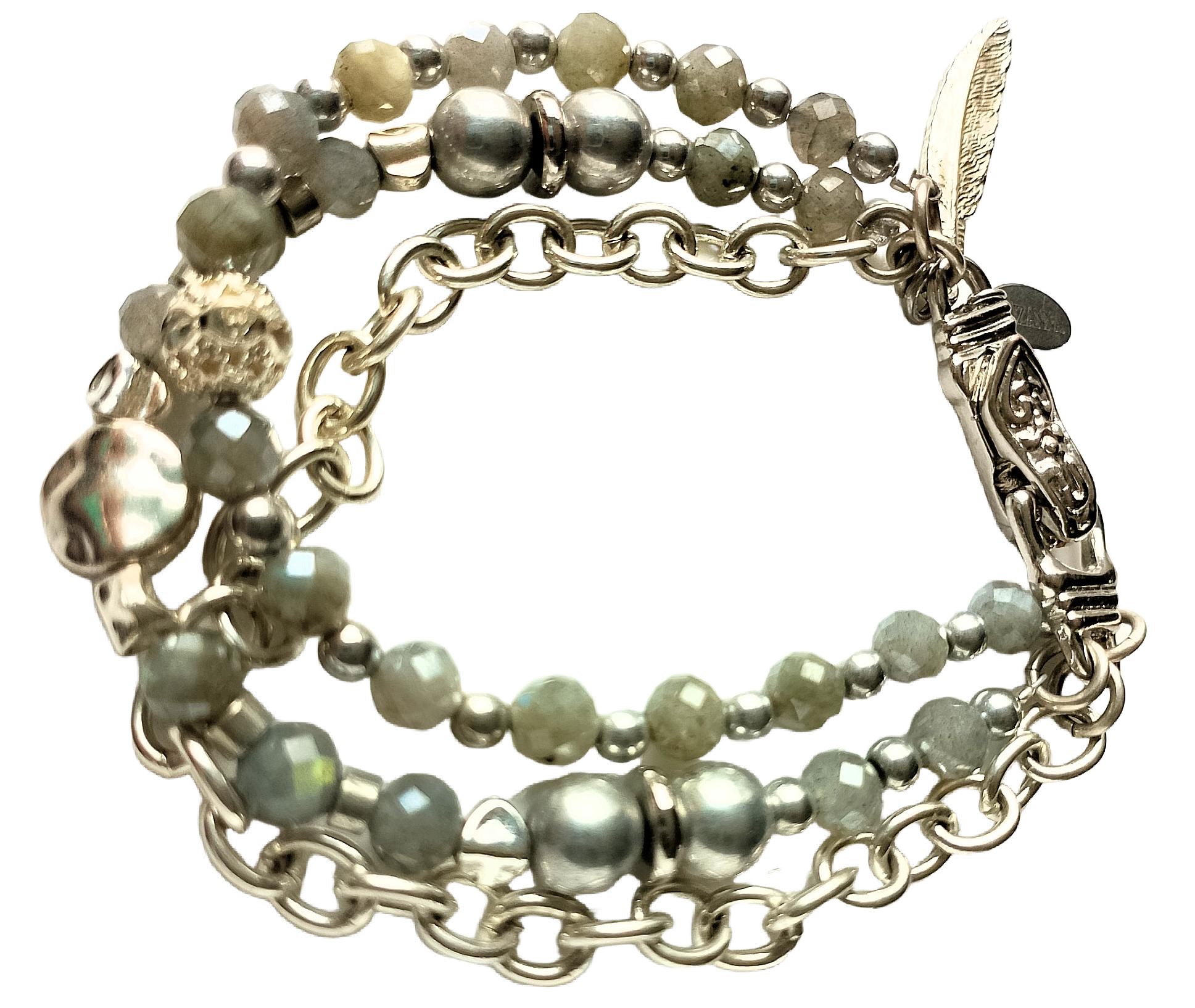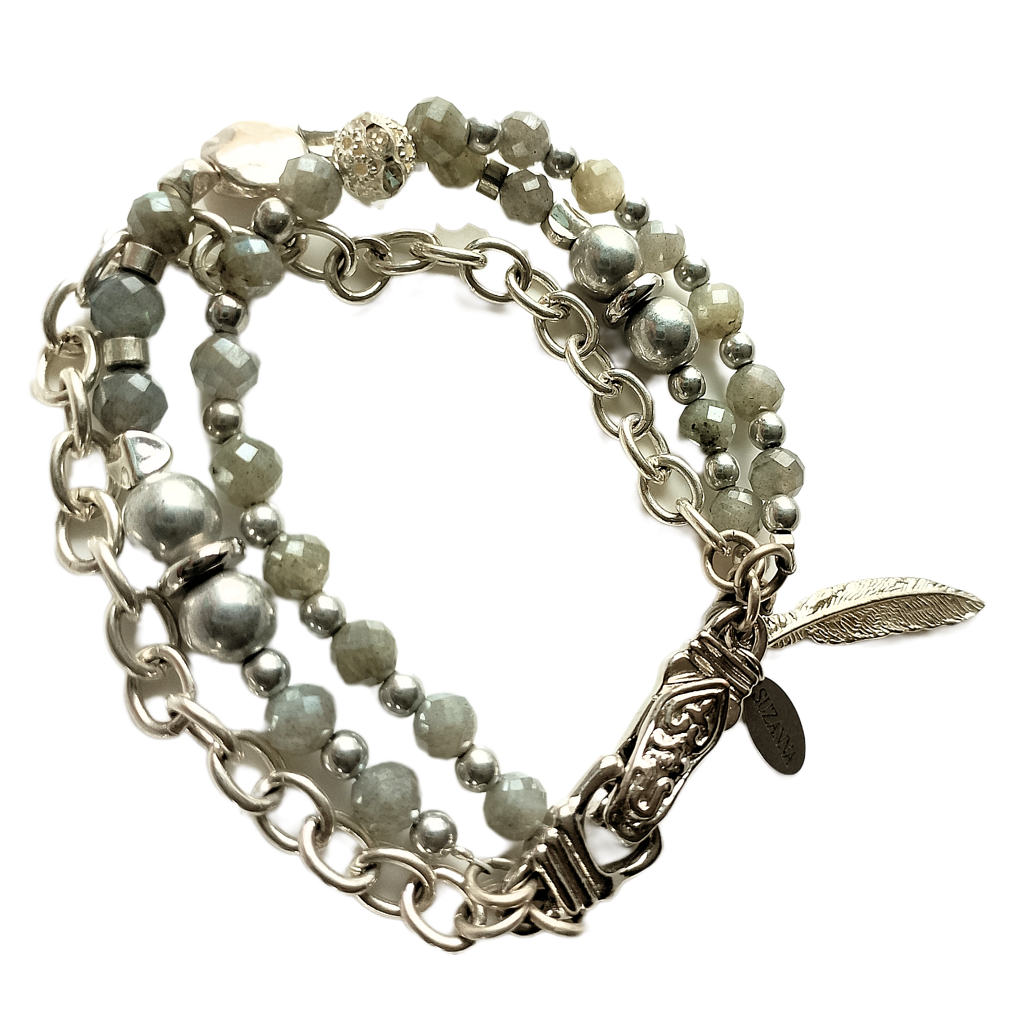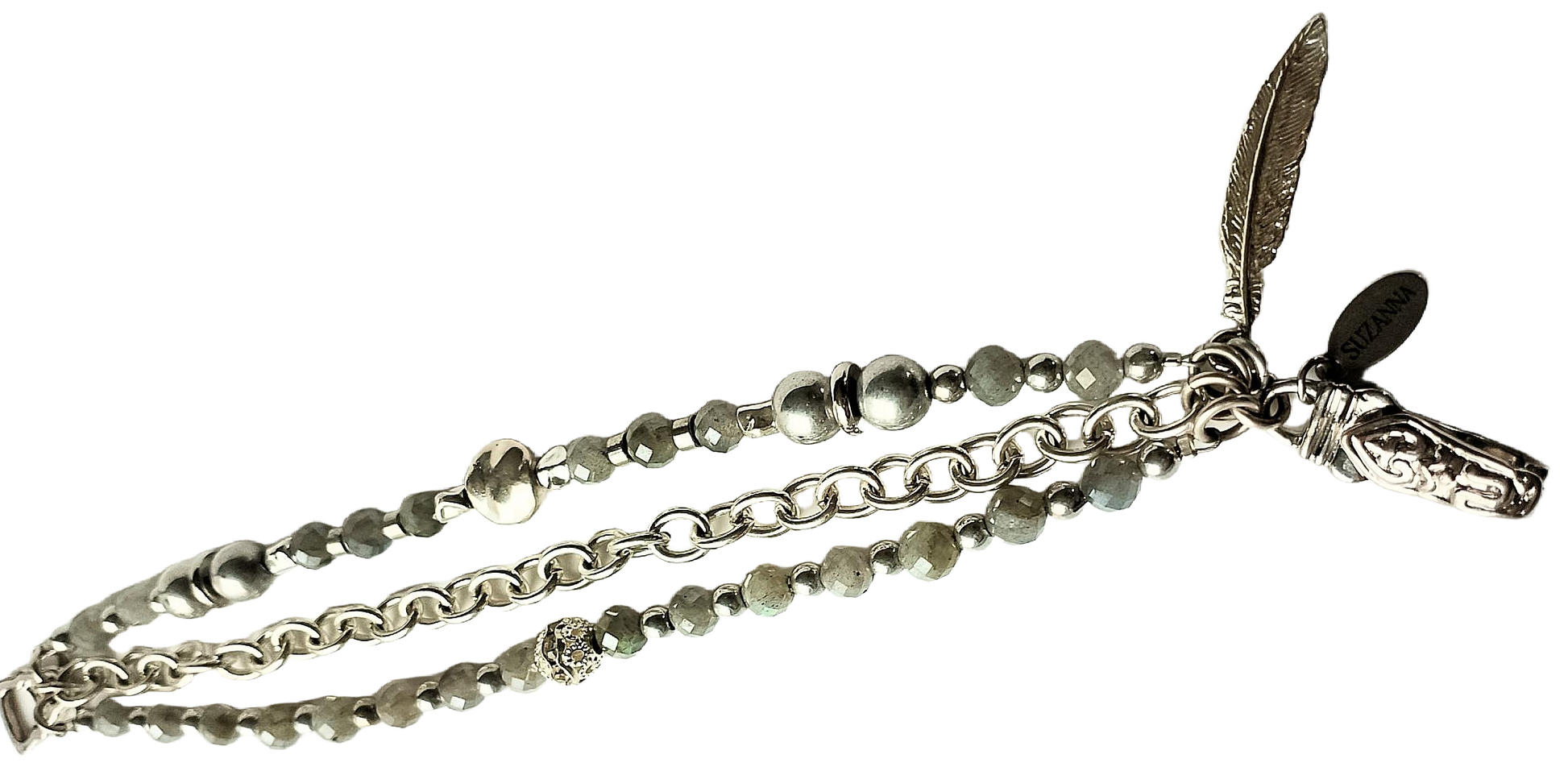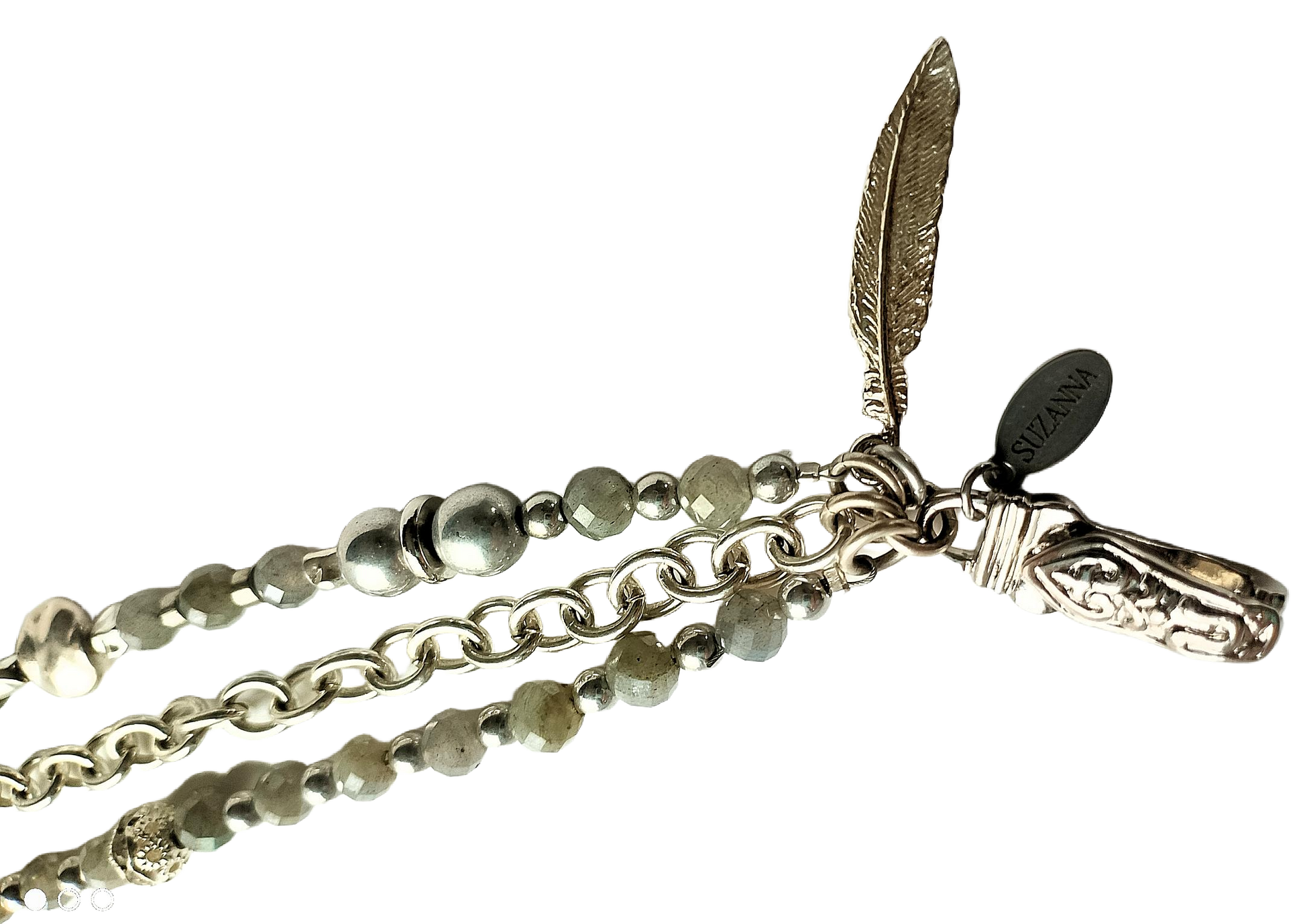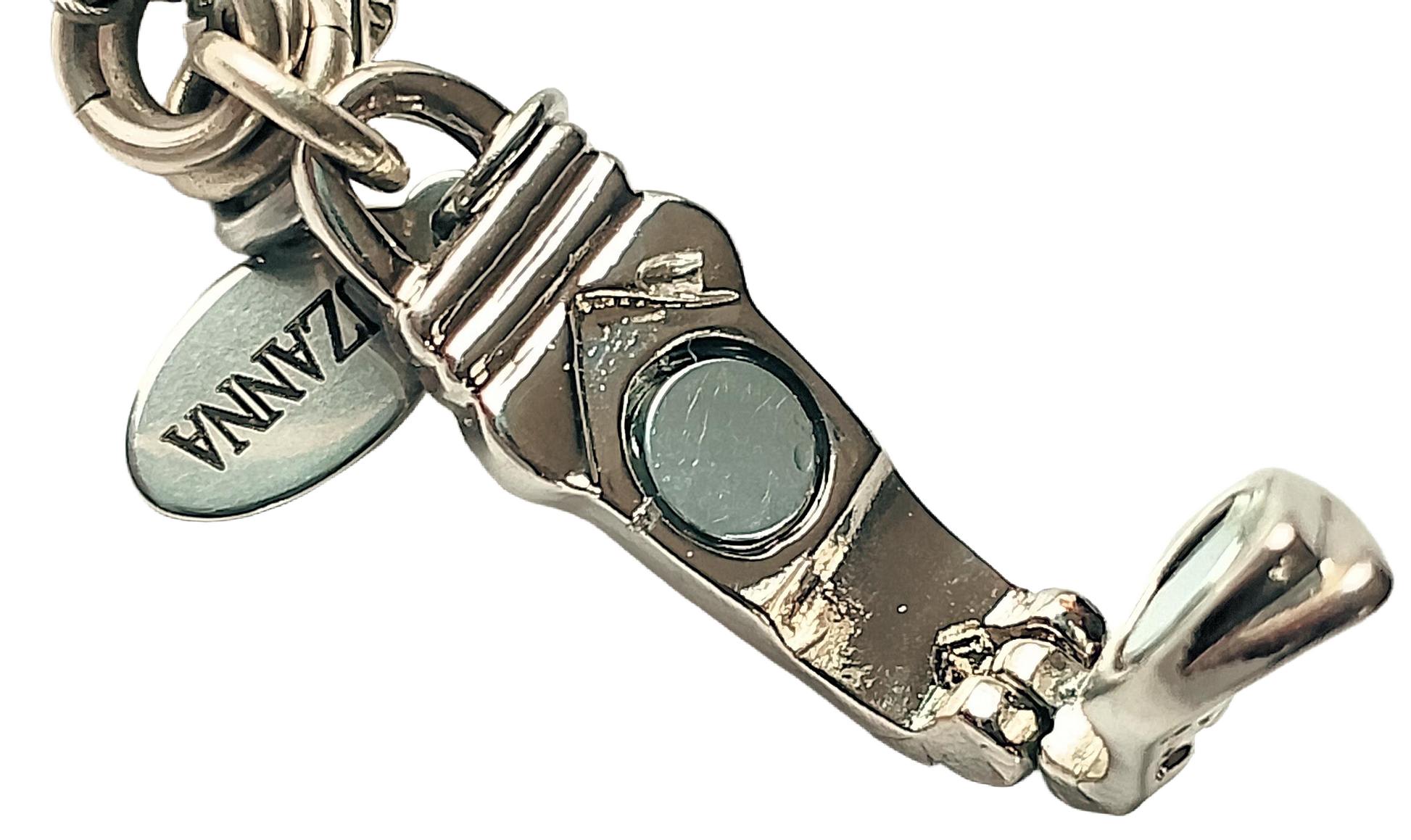SUZANNA Handcrafted Jewelry
Faceted Labradorite, Silver Druk Czech Glass Beads. Silver Chain & Sterling Silver beads Three-Strand Bracelet
Faceted Labradorite, Silver Druk Czech Glass Beads. Silver Chain & Sterling Silver beads Three-Strand Bracelet
Couldn't load pickup availability
Share
Our Faceted Labradorite, Silver Druk Czech Glass Beads, Silver Chain, and sterling Silver Three-Strand Bracelet are all about understated elegance. With its smoky gray and silver vibe and pops of shiny silver spacers, it effortlessly transitions from day to evening.
One of my personal favorites, this classy multi-strand bracelet features two strands filled with faceted and flashy labradorite beads, Druk Czech satin silver glass beads, sterling silver spacer beads, sterling silver saucer spacers, a satin silver lentil bead focal on one strand, and a pave-style silver bead focal on the second strand. The third strand is a beautiful satin silver cable chain. View our Faceted Labradorite Earrings
All the strands come together with a showy silver fold-over magnetic clasp handmade in Germany by ClaspGarten, a nearly century-old brand (est. 1921)! The bracelet is embellished with a sterling silver-plated pewter feather charm, and our signature SUZANNA logo tag in silver. All jump rings, spacers, crimps, and crimp covers are sterling silver.
- 8 inches in length overall (I wear about 7.5 inches and this one fits me perfectly, it should not be too tight but slightly drape over the hand a little.)
- 32 grams
- FREE SHIPPING
Labradorite is a mesmerizing gemstone known for its iridescent play of colors, often displaying flashes of blue, green, gold, and even violet.
Properties of Labradorite
Labradorite is a feldspar mineral with a Mohs hardness of 6 to 6.5, making it relatively durable for jewelry. Its most striking feature is labradorescence, a unique optical effect where light interacts with its internal structure, creating a shimmering glow. The stone is typically gray-green, dark gray, or black, with vibrant flashes of color appearing when viewed from different angles.
Historical Significance
Labradorite was first discovered in Labrador, Canada, by Moravian missionaries in 1770, but Inuit legends suggest it was known long before. According to folklore, the stone was formed when a warrior struck the rocks with his spear, releasing the Northern Lights trapped within. It became popular in Europe in the 18th and 19th centuries and has since been treasured for its mystical qualities.
